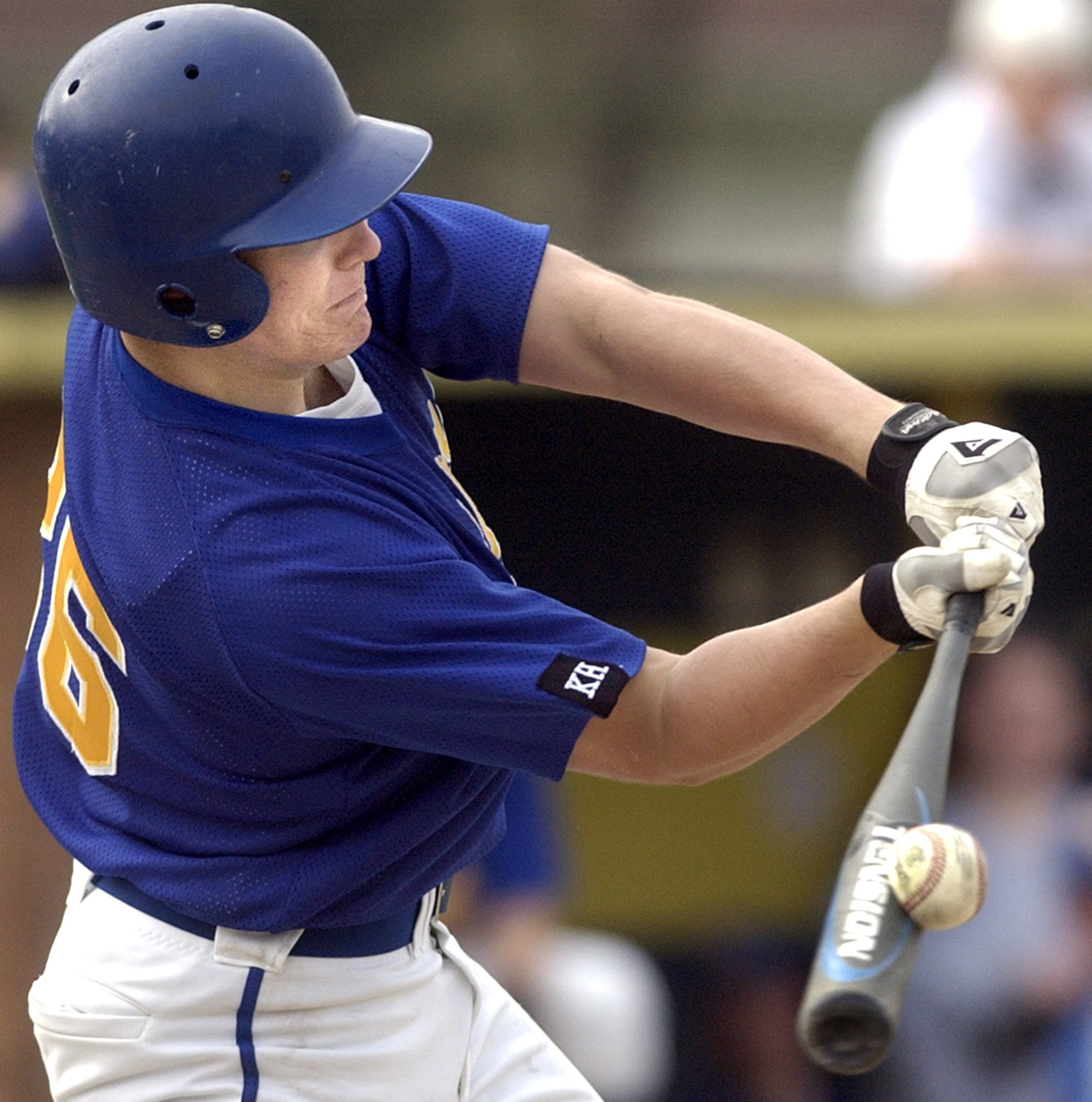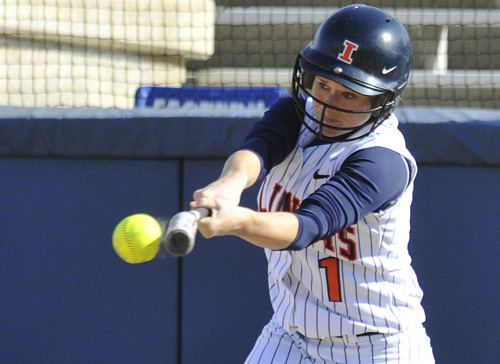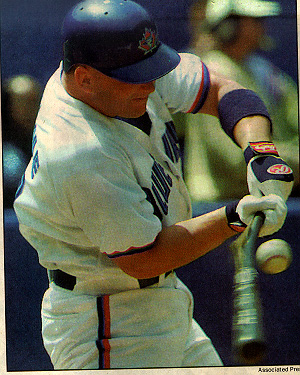Baseball-Bat Collision Images



A photo just after the ball has left the bat, after the ball has impacted near the center of the bat. Note that the bat is bending (indeed, cracking) with the middle part of the bat bowing inward toward the catcher. (courtesy, Associated Press) The technical reason why the bat bows the way it does has to do with the shape of the lowest bending mode of a free bat. This mode has two nodes, which are fixed points that do not move. One node is located in the barrel, about 6 inches from the tip. The other node is located in the handle, about 6 inches from the knob. When the ball impact the barrel node (as in the first photo), the bat barely bends at all. When it impacts in the barrel to the outside of the barrel node, the bat initally bends with the center of the bat bowing outward toward the pitcher (as in the second photo). When it impacts between the two nodes, the center of the bat initially bends so that the center bows inward toward the catcher (as in the third photo). If the bending amplitude is large enough, the bat can break. In the second photo, the bat is aluminum, which does not break.
Video #1 of bat vibrating after softball-bat collision. The data were taken as part of a swing speed study for men's slow-pitch softball, sponsored by the ASA. The data were taken and analyzed by Professor Lloyd Smith and his team from the Sports Sciences Laboratory at Washington State University.
Video #2 of bat vibrating after a softball-bat collision. The data were taken as part of a swing speed study for women's fast-pitch softball, sponsored jointly by the ASA and NCAA. The data were taken and analyzed by Professor Lloyd Smith and his team from the Sports Sciences Laboratory at Washington State University.
High-speed video of softball-bat collision. In this remarkable video taken at the Sports Sciences Laboratory at Washington State University, the softball with an initial speed of 110 mph impacts a bat which is initially at reat. The ball rebounds from the bat at a speed that is barely discernable. However, the truly remarkable feature of the video is that the softball flattens out when in contact with the bat and remains flattened even after leaving the bat.
Slow-motion video of a skilled slow-pitch softball player swinging the bat. Interesting things to notice: 1. Early in the swing, there is considerable forward movement of the hands, whereas just before contact the hands are barely moving and the bat is essentially rotating about the wrists. 2. The bat slows down significantly just after contact with the ball.
High-speed video of a baseball striking a flat plate at about 120 mph, taken at 30,000 frames/s, from the Baseball Research Center at UMass/Lowell.
Video-1 and Video-2 of a baseball striking an ash cylinder bolted to a concrete wall, taken at 1000 frames/s. These videos are best viewed with Windows Media Player. The grid in the background has a 1-inch spacing for both horizontal and vertical lines, allowing a calibration of the camera. In both cases, the incident ball has a speed of about 91 mph and a spin rate of 3000 rpm. In Video-1, the ball hits the top half of the cylinder, scatters upward, and emerges with backspin (i.e., the spin direction is unchanged). In Video-2, the ball hits the bottom half of the cylinder, scatters downward, and emerges with topspin (i.e., the spin direction is reversed). These video's and similar data are being studied to determine the relationship between the outgoing spin and the scattering angle.



